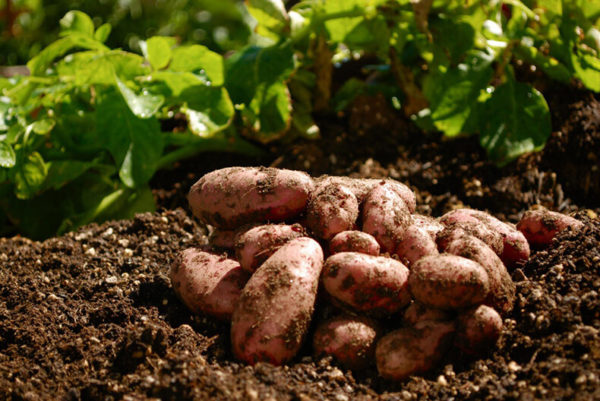
Sowing involves the mandatory alternation of vegetables, fruits and berries. These requirements are due to the need to maintain a good soil condition and to obtain a high-quality, rich crop. Knowing what can be planted after potatoes, a rich and high-quality crop is guaranteed.
The rules of sowing turnover require the mandatory alternation of various vegetable and fruit crops. Many beginner gardeners are interested in what can be planted after potatoes to maintain a good soil condition and a rich harvest. The correct alternation of fruits and vegetables guarantees the protection of plants from pests and diseases, improves taste and nutritional characteristics, contributes to a large crop.
Content
What can be planted after potatoes next year
Potatoes in the growing season take a large amount of phosphorus and potassium from the soil. For this reason, it is desirable to compensate for the deficiency of both substances, and for this it is allowed to use special fertilizers. Without fail, potato tops are removed, as it increases the risk of soil contamination.
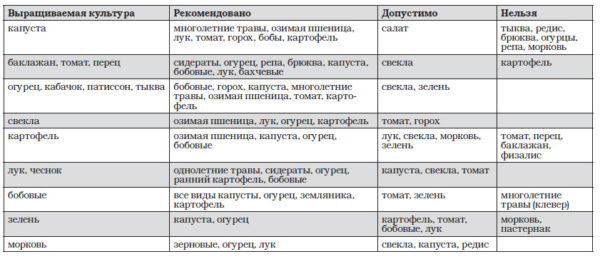
After potatoes, you can not plant strawberries and strawberries. Both berries are allowed to be planted, at least after 3 years.
For the rest, it is recommended to choose crops, focusing on their nutrient needs. This is the main essence of correct crop rotation.
Being interested in what can be planted after potatoes, one of the options is green crops. However, it is recommended that they be planted in another place to obtain a large and high-quality crop.
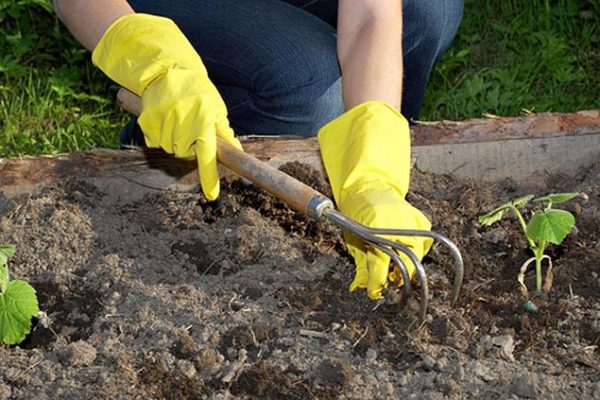
Gardeners often choose rye, lupine, oats. Such herbs help to improve the fertility of the soil, as the restoration of the balance of nutrients is guaranteed.
Crop Rotation Rules
What it is
Crop rotation is the basis for the successful cultivation of various vegetables, fruits and berries. This is due to the fact that some crops worsen the condition of the soil. At the same time, other vegetables enrich the soil, so that after they will be able to get a good harvest with minimal effort.
Gardeners according to the rules of the alternation of culture are conditionally divided into 4 large groups:
- leafy and green plants are particularly sensitive to the nitrogen content in the soil;
- legumes show special requirements for phosphorus;
- root crops need a high content of potassium;
- legumes contribute to the replenishment of nitrogen, so it is advisable to use them during crop rotation.
If you know what you can plant after potatoes the next year, you can guarantee a high-quality and rich harvest.
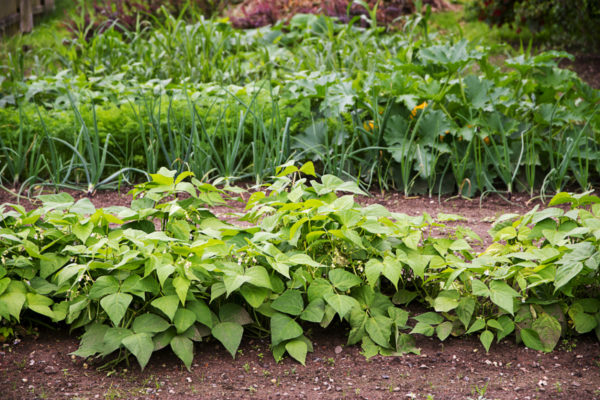
Why alternate
Large areas are usually allocated for potatoes, so in the future, several crops can be combined at once.In any case, the same area can not be again led under the potatoes. Moreover, you cannot grow vegetables from the same family (for example, tomatoes, peppers, eggplant). If you alternate cultures incorrectly, you may encounter many undesirable problems.
The main goals of the alternation of vegetable and fruit crops:
- in the soil, despite serious preventive measures, pathogens may remain, as a result of which further crops are at risk;
- pest larvae can overwinter in the ground;
- crops of the same family need similar nutrients, so soil quality is rapidly deteriorating.
For the above reasons, it is extremely important to adhere to the correct crop rotation.
What to plant after potatoes
Potatoes in the same place can be planted only after 2 to 3 years. Being interested in what to plant after potatoes, it is recommended to pay special attention to the following options:
- carrot;
- cucumbers
- onion;
- turnip;
- beet;
- radish or radish;
- daikon;
- green crops (celery, lettuce, spinach).
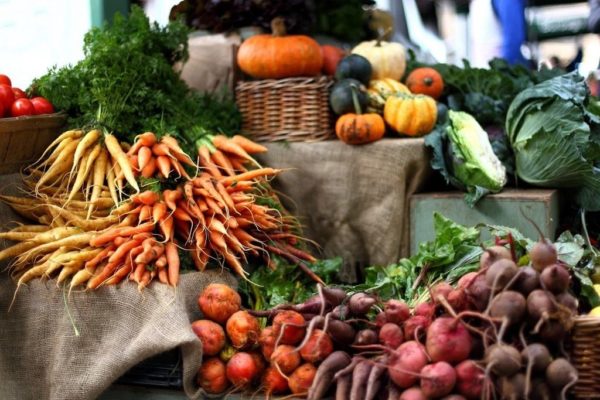
After the land rests, you can plant pumpkin, squash, squash or cucumbers before the potato growing season. In spring, cabbage and legumes are allowed to be planted.
The above vegetables will grow well, as they require other nutrients.
What can not be planted after potatoes
After potatoes, you can not plant solanaceous vegetables: tomatoes, eggplant, pepper. Such crops are susceptible to almost all diseases that attack potatoes. For this reason, there is an increased risk of infection with pests and other diseases. In addition, if it is planned to grow unsuitable crops, it is assumed that the soil will need to be reinforced, and it will take a lot of effort to get the crop successfully.
Which neighborhood is useful
To get a rich harvest, it is recommended to plant neighboring plants correctly. This approach ensures easier development of seedlings, increased growth and fruiting.
Many gardeners plant beans between rows of different vegetable crops. Beans guarantee the enrichment of the soil with nitrogen. At the same time, potatoes are able to protect legumes from bruchus.
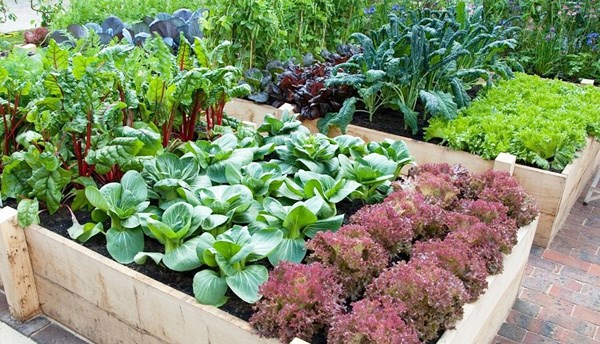
Potatoes also go well with onions, garlic, white cabbage, corn, horseradish, spinach, eggplant and mint. If these crops grow nearby, the improvement of soil properties and the ability to get rid of pests are guaranteed, and many diseases are prevented.
Tomatoes and sunflowers, fruit trees (cherries, raspberries, cherries, mountain ash) cannot be planted next to potatoes, as otherwise the risk of infection with late blight will increase.
Reviews
Helena:
“Perennial planting of potatoes in the same place is prohibited. Otherwise, the soil will significantly deteriorate in quality, as a result of which serious problems will arise with the cultivation of a vegetable crop. I was recommended to plant corn. I took advice. As it turned out, the root system of corn loosens the soil and enriches the soil with minerals in a couple of years. I was satisfied! ”
Sergey:
“I constantly grow potatoes in the same place. I believe that crop rotation is not necessary. I bring in a large amount of organic matter and sow a couple of times in a season of green manure. Usually I use fatseliya, mustard, barley. If you focus on more active garden work, a good soil condition can be maintained and the undesirable risks of infection of planted potatoes can be eliminated. In addition, a high-quality and rich harvest is still affordable. ”
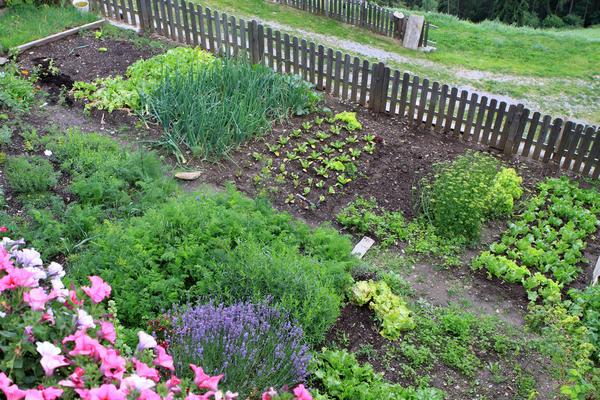
Sofia:
“I never plant potatoes in the same land twice in a row. Potatoes greatly deplete the soil, since this vegetable crop requires phosphorus and potassium. Before planting a new crop, I always bring in fertilizers, urea, and manure. I believe that the introduction of such fertilizers guarantees the restoration of the nutritional composition of the soil. After collecting potatoes, you can plant siderates (rapeseed, clover, phacelia, oats, lupine). If desired, you can plant peas, mustard and oats after potatoes. It is the siderates that improve the composition of the soil in the shortest possible time. Subsequently, I also plant pumpkin, beets, green crops. I am sure that this approach improves the yield of each vegetable. ”
Irina:
“Proper crop rotation is required. We usually use white mustard and winter rye. It should be noted that rye is cheaper, but mustard is growing faster. We sow mustard and rye immediately after harvesting, and when planting, mix the ground. If garden work is planned in the dry period, it is advisable to wait until it rains. If the soil is very dry, rye and even mustard may not rise. Compliance with such simple rules guarantees the possibility of further obtaining a good harvest of potatoes, but for this you still need to wait a couple - three years. "
Knowing what to plant after potatoes, you can guarantee the correct crop rotation, maintaining a good soil condition. As a result, a rich harvest of potatoes becomes possible.




 Description and description of varieties in Belarus with a photo
Description and description of varieties in Belarus with a photo Do I need to pick flowers from potatoes: why do they do it
Do I need to pick flowers from potatoes: why do they do it When to dig potatoes: timing and availability of new potatoes
When to dig potatoes: timing and availability of new potatoes How to grow a good potato crop: various methods and methods, planting and care
How to grow a good potato crop: various methods and methods, planting and care